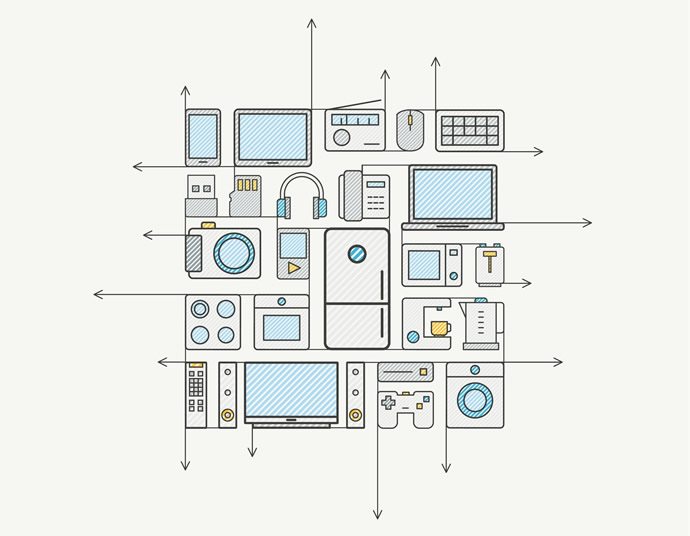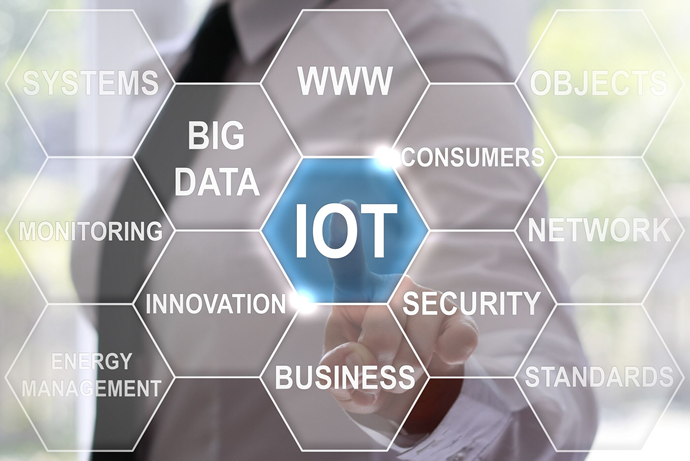Inspiration for innovation
Prior to the electronica exhibition in Munich, Electronic Specifier Editor Joe Bush caught up with Dr. Boris Golubovic, Vice President of Marketing and Strategy, Electronics Business Unit, Littelfuse, to discuss the company’s focus at the show and how it is tackling the challenge of the Internet of Things (IoT).
There is, without doubt, a certain amount of mysticism that still surrounds the IoT, regardless of whether you are a consumer, operate in a commercial space or view the topic from a more industry specific standpoint. What is it? When will it be rolled-out? How will it impact me? These are all questions that are currently being asked by some, and which are still leaving others without answers.
To provide the most efficient and cost effective IoT offering to its customers, Littelfuse has gone through something of an evolution during the last ten years or so - more so than in the previous 50, stated Golubovic. “We’re really expanding our technology and product offering from being solely a circuit protection and fuse company to being a very broad technology company that includes circuit protection, semiconductor products, control and sensing products,” he commented.
This evolution has changed the way that Littelfuse both views itself as a company and how it is presenting itself to the market and its customers – changing from a products-based company to a solutions company that aligns itself with its customers’ challenges and specific market segments.

Golubovic added: “In the past Littelfuse was perhaps too modest in terms of presenting its capabilities – particularly in the modern world of rapid communications. So electronica this year is about us coming out with a clear message that we serve markets that people can identify with, and we will be presenting our products in the form of solutions within those markets – such as building automation, appliances, mobile and wearable electronics, data centre equipment, LED lighting and several sub-segments within the automotive market.
“We don’t want our products to solely be viewed within a technical vacuum and we want to highlight the fact that our customers can look at our products in terms of a solution that they’re providing to their end customers rather than just an individual item. That’s us presenting ourselves in our true colours in terms of what we can provide to our customers.”
Making the IoT work
Golubovic views Littelfuse as being on the physical periphery of what makes IoT devices work with a focus on how to help identify challenges and provide solutions for its customers when deploying IoT components.
He continued: “The question for many is what is IoT and do I really need it? What Littelfuse does is identify the properties within the IoT environment and make sure that the devices involved continue to work in a reliable and safe manner. For example, if you have a sensor deployed in a building security system that tells you if a door is open or closed, there may also be an access panel that needs ESD (electrostatic discharges) protection powered by a battery. Ensuring the reliability of these devices is where we come in.
“As the IoT grows we see more of these points being added over time with increased miniaturisation and more sensors in more places where they can potentially be damaged due to, for example, user induced ESD, so it’s our job to help make them reliable.”
Value versus cost
The IoT will undoubtedly result in the number of sensors increasing exponentially as more and more devices become connected, and more machines begin to interact with one another. However, Golubovic views the challenge for the industry at large as whether the customer can extract more value from an IoT deployment i.e. to remain with having one thermostat per building for example, or to have one thermostat per room and being able to read them half way across the world. “This is a key challenge for IoT deployments and we can help by making sure that our solutions are affordable and do the right thing. But we as an industry need to find a way to articulate the value of each given element that we develop to the end customer,” he said.
In addition, one of the primary perceived obstacles to IoT is of course cost (and hidden costs), and identifying that return on investment. In the commercial space in particular one of the main issues to IoT system deployment is the investment and the ongoing reoccurring costs that those systems bring to bear. While it’s true that efficiencies can certainly be gained by remotely measuring processes for example, IT and security personnel will be needed to manage those systems – all of which come at a cost that is not always taken into account. It’s certainly the case that these hidden costs could well be offset, but they are hidden from plain sight until it’s understood what it takes to implement such a system.
IoT ready
In practical terms, Golubovic claims that being ready for the IoT will ultimately mean not being disappointed following IoT deployment. And in order to ensure this is not the case he has recommended several key processes to follow prior to IoT installation. “I would first recommend the need to define the problem that needs to be solved and quantify the measurement of success.
“Step two would be to develop a step by step process to check that your deployment meets your original assumptions. For us, what we find to be very valuable to our customers (who generally make some sort of system hardware), is how we work with them to make sure they don’t underestimate the risks of deploying electronics in many more places.
“In something like building automation for example, you’re basically starting to expose many more electronic points in buildings and environments that perhaps previously didn’t have control systems – user interfaces, surges through power lines, battery protection, etc. So where we help our customers is making that connection where an infrastructure piece of equipment meets a consumer good. We have been in both of those industries and that’s the real value that we can bring to our customers - more electronics in more places - meaning we can uniquely contribute to the market.”
Summary
The IoT really is front and centre of Littelfuse’s offering at electronica and in terms of the company’s strategy moving forward. It spans all the markets served by the company and presents a huge opportunity. Behind the scenes Littelfuse has been present in IoT in some of the more speciality industry applications such as industrial automation and data centres, but IoT is really about sensing and control and having had such a broad presence in consumer goods over the years, this is an area where the company intends to play a key role.
Golubovic concluded: “In the future I think there will be two main areas of focus for us in terms of IoT – the commercial space, as well as improving the quality and comfort of life in the personal space. The difference will be what we like to call the total cost of ownership calculation. In the commercial space it will need to meet a business objective and provide a value that, over the lifetime of the product, justifies the investment. We expect to see ongoing focus in this area on long term reliability and predictability of systems.

“So, here we’re talking about the classic protection and reliability space where Littelfuse started many years ago. So that will be our ongoing focus in this area – providing predictability and a clear cost of ownership to the customer.
“In the personal space the calculation is a bit less monetary driven and more about experience. That space for us will probably be driven by ongoing miniaturisation, which is particularly relevant in personal applications with the limits of technology being pushed all the time and very quickly.
“Many of us jokingly say that the IoT means different things to different people – which is probably true. In all honesty the IoT hasn’t fully materialised yet so it will be an area that will drive our inspiration for innovation.”











